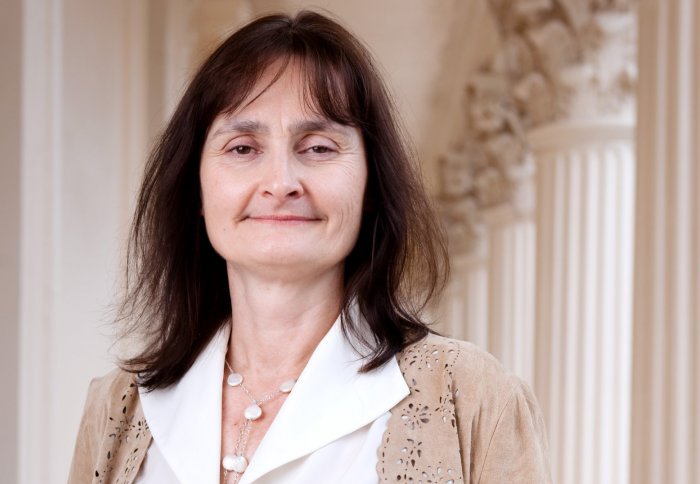
Michele Dougherty has never been to space in person, but as a Principal Investigator for the international Cassini spacecraft mission, she’s probably seen Saturn closer than anyone else has. Looking at Jupiter and Saturn through a homemade telescope as a child in South Africa, however, she had no idea she’d one day help lead missions to those far off specks of light.
Dougherty was born in South Africa and received a PhD from the University of Natal, where she studied wave-particle interactions (expertise that later in her career would help her analyze magnetic fields and atmospheres in outer space). After a fellowship in applied mathematics in Germany, she moved to Imperial College London, where she has remained ever since, currently serving as Professor of Space Physics.
Her early work on space research involved modeling Jupiter’s magnetic fields for the Ulysses mission. Later, she became involved with the Cassini mission, in charge of its magnetometer (MAG) instrument, which she and her team used to collect magnetic field data from Saturn and its moons. In one of her career’s most exciting moments, she detected unusual data from around one of Jupiter’s moons, Europa, and convinced the Cassini team to alter their planned orbit path so that she could investigate further. It took a lot of courage to stand up for herself, but it paid off. She was right; the anomalies in the data weren’t just “noise,” they were evidence of an atmosphere that could potentially support microbial life!
The Cassini mission ended last year, and Dougherty’s sights are once again set on Jupiter – with her “stellar” record leading Cassini’s MAG, she was chosen to lead the MAG of the European Space Agency (ESA)’s Jupiter Icy Moon Explorer (JUICE) spacecraft, scheduled to go into orbit around Jupiter’s largest moon, Ganymede by 2033.
In addition to “PhD,” Dougherty can now add “CBE” to her name, as it was announced last week as part of the UK’s “2018 New Years Honours” that she has been chosen to receive the title of “Commander of the Order of the British Empire” for her “services to UK physical science research.”
Photo Credit: Royal Society
[sharethis-inline-buttons]
